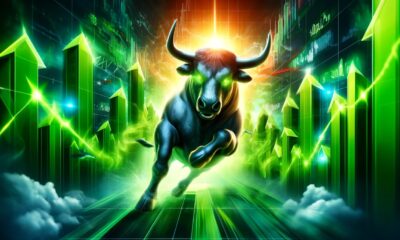Altcoins
Best Altcoins And Deep Learning Models

The AI trend has taken a significant leap forward in 2023, reshaping our understanding of what’s possible. As we delve into 2024, these advancements are not just theoretical; they’re practical, influential, and deeply intertwined with various sectors, notably cryptocurrencies.
At the forefront of this revolution are deep learning models, sophisticated algorithms that have become the powerhouse driving the latest AI trends. These models are not only transforming traditional industries but are also making a profound impact in the crypto space. This article explores the synergy between AI and crypto, unraveling how AI trends are influencing the future of digital currencies and beyond.
The AI Trend: Understanding The Hype
In 2023, the AI landscape witnessed a series of breakthroughs that catalyzed what many now refer to as the AI revolution. The year was marked by significant strides in various AI domains, from chatbots to content creation, all contributing to the immense hype surrounding AI today.
A key player in this revolution was OpenAI’s ChatGPT, a conversational AI that demonstrated unprecedented capabilities in natural language processing. Its success laid the groundwork for wider acceptance and integration of AI in everyday applications, making interactions with machines more seamless and intuitive than ever before.
Simultaneously, Google’s Bard emerged as another prominent figure in the AI narrative. Competing in the realm of advanced language models, Bard showcased the potential of AI in understanding and generating human-like text, further fueling the competition and innovation in AI language processing.
AI Trends Beyond ChatGPT
But the AI trend in 2023 extended beyond chatbots. In the realm of content creation, AI tools revolutionized the way we produce and consume digital content. AI-driven platforms enabled creators to generate written content, design graphics, and even compose music with an efficiency and creativity that were previously unattainable. This democratization of content creation opened new avenues for expression and communication, making it a cornerstone of the AI hype.
Video and image generation technologies also saw groundbreaking advancements. AI algorithms became capable of creating high-quality visuals and animations, previously the domain of skilled human artists and video editors. This shift not only accelerated the content production process but also raised important discussions about the role of AI in creative industries.
These developments in chatbots, content creation, and visual generation collectively contributed to a surge in interest and investment in AI technologies. Businesses, big and small, started exploring how AI could revolutionize their operations, while consumers became more accustomed to AI-driven experiences in their daily lives.
The year 2023, therefore, stands as a pivotal moment in AI history. It was a year where the capabilities of AI were not just tested but also embraced on a scale never seen before. This set the stage for the hype that AI enjoys today – a hype rooted in tangible advancements and real-world applications that continue to shape our digital and physical realities.
Key Trends In AI
As we delve into the intricacies of AI’s evolution, several key AI trends stand out, painting a vivid picture of how AI is reshaping the technological landscape.
1. Advancements In Natural Language Processing (NLP):
In 2023, NLP technologies made significant strides, exemplified by systems like OpenAI’s ChatGPT and Google Bard. These platforms have enhanced AI’s ability to understand, interpret, and generate human-like language, leading to more sophisticated and seamless interactions between humans and machines.
2. AI In Automation And Robotics:
AI’s role in automation has expanded beyond traditional manufacturing into service industries, healthcare, and logistics. Robotics, powered by AI, are now more adept at performing complex tasks, from intricate surgeries to efficient warehouse management, showcasing AI’s versatility in various practical applications.
3. AI-Driven Data Analysis And Decision Making:
Businesses are increasingly leveraging AI for data-driven decision-making. AI algorithms can analyze vast datasets to uncover patterns and insights, aiding in areas like market analysis, customer behavior prediction, and risk management, thus becoming an invaluable tool for businesses.
4. Ethical AI And Governance:
With AI’s growing influence, ethical considerations and governance have become more critical. The AI community is focusing on developing ethical guidelines and frameworks to ensure AI’s responsible use, particularly in terms of privacy, bias, and transparency.
5. AI In Content Creation:
AI has revolutionized content creation, enabling the generation of written, visual, and auditory content at unprecedented scales. Tools for AI-driven content creation are becoming more accessible, allowing creators to produce high-quality content with minimal effort.
6. Personalized AI Experiences:
Personalization has become a key focus in AI development. AI systems are now better equipped to offer personalized recommendations and experiences in sectors like e-commerce, entertainment, and health, enhancing user engagement and satisfaction.
7. AI And Cybersecurity:
As cyber threats evolve, so does AI’s role in cybersecurity. AI algorithms are being employed to predict, detect, and respond to cyber threats with greater accuracy and speed, becoming an essential component of modern cybersecurity strategies.
8. AI In Healthcare:
AI’s application in healthcare is witnessing exponential growth, from diagnostics and patient care to drug discovery and epidemiology. AI is enabling more accurate diagnoses, personalized treatment plans, and better patient outcomes.
New AI Trends For 2024
The AI landscape in 2024 is brimming with innovation, marked by significant advancements and emerging AI trends. Two of the most notable developments in this realm are AGI and Grok, each representing a unique stride in AI technology.
AGI: The Quest For Artificial General Intelligence
Artificial General Intelligence (AGI) stands at the forefront of AI trends for 2024. AGI is a paradigm shift from the current AI models that excel in specific tasks (often referred to as Artificial Narrow Intelligence, or ANI) to a more holistic form of intelligence akin to human cognition. The goal of AGI is to create machines that can independently learn, reason, and apply knowledge across a wide range of tasks and disciplines, much like a human being. This development represents not just a technological leap but also a significant philosophical and ethical milestone in the journey of AI.
Grok By xAI: A New Contender In Conversational AI
Grok, developed by Elon Musk’s company xAI, emerges as a significant player in the AI trend of conversational bots, akin to OpenAI’s ChatGPT. This AI bot distinguishes itself by its advanced natural language processing capabilities and its ability to engage in meaningful, context-aware conversations.
Grok’s development reflects a growing AI trend to create more sophisticated, intuitive, and user-friendly conversational interfaces. These interfaces are not just limited to customer service applications but are increasingly becoming integral in various domains, including education, healthcare, and personal assistance.
These AI trends, AGI and Grok, are just the tip of the iceberg in a year that promises exponential growth and innovation in AI. As AI continues to evolve, it is set to redefine how we interact with technology and how technology, in turn, shapes our world.
Experts Predict The AI Trends For 2024
As we navigate through the evolving landscape of AI, insights from industry experts provide valuable foresight into what the future holds. Two notable figures, Stephen Anthony and Vala Afshar, have shared their predictions for the AI trends of 2024, offering a glimpse into the exciting advancements and shifts we can expect.
Stephen Anthony, the creator of AI Top Rank, recently shared via X (formerly Twitter) his 15 predictions for AI trends in 2024. His forecasts encompass a wide range of developments, indicating a diverse and dynamic future for AI. He posted:
15 predictions for AI trends in 2024:
- AGI
- Grok
- OpenAI
- Telepathy
- Personal AI
- Synchronicity
- Humanoid robots
- Self-driving vehicles
- Automated businesses
- Decentralization
- Censorship
- Privacy
- GPTs
- xAI
Vala Afshar’s Forecasts: AI Trends For 2024
Vala Afshar, Chief Digital Evangelist for Salesforce, has also shared profound insights into the anticipated AI trends for 2024, particularly highlighting its deepening influence in the business world and everyday consumer life. Drawing from Forrester’s research, Afshar’s projections underscore a future deeply intertwined with AI advancements.
Afshar predicts a significant shift in consumer engagement with generative AI, stating, “60% of skeptics will use (and love) generative AI — knowing it or not.” This statement underscores a transformative change in the public’s interaction with AI, moving from skepticism to widespread acceptance and reliance.
In the realm of business, Afshar foresees AI as a catalyst for enhanced productivity and creativity. He points out, “Enterprise AI initiatives will boost productivity and creative problem-solving by 50%.” This reflects a substantial increase from current levels, where AI projects have already achieved up to a 40% improvement in efficiency, particularly in software development tasks.
Afshar also emphasizes the evolving role of AI in marketing and branding. He highlights the commitment of major agencies towards AI, saying, “The top 10 agencies will spend $50 million in partnerships to build custom AI solutions for enterprise clients.” This investment demonstrates the growing recognition of AI’s potential to revolutionize brand strategies and consumer engagement.
These insights from Afshar reveal a landscape where AI is not just a technological tool but a fundamental component reshaping business strategies, consumer experiences, and societal interactions in 2024.
Deep Learning Models: Spearheading The AI Trend
Deep learning models have been pivotal in driving the AI revolution, offering groundbreaking advancements across various sectors. In 2023, some of the most well-known and influential deep learning models include:
Convolutional Neural Networks (CNNs): Developed by Yann LeCun in 1988, CNNs, also known as ConvNets, are primarily used for image processing and object detection. They consist of multiple layers and were initially designed for recognizing characters like ZIP codes and digits.
Long Short Term Memory Networks (LSTMs): A type of Recurrent Neural Network, LSTMs are known for their ability to learn and memorize long-term dependencies, making them extremely useful in time-series prediction, speech recognition, music composition, and even in pharmaceutical development.
Generative Adversarial Networks (GANs): These generative deep learning algorithms are designed to create new data instances that resemble training data. GANs consist of a generator, which learns to produce fake data, and a discriminator, which learns to differentiate between real and generated data. They have seen increased use in enhancing astronomical images, simulating gravitational lensing for dark-matter research, and upscaling low-resolution textures in video games.
These models represent just a few examples of the deep learning technologies at the forefront of the AI revolution. Their applications range from enhancing image and speech recognition to driving innovation in gaming and scientific research, underscoring the transformative impact of deep learning in today’s AI landscape.
Machine Learning News: Latest Developments
Keeping pace with the advancements in deep learning, the broader field of machine learning is also experiencing a surge in innovation and application. Recent developments in machine learning are not only enhancing existing technologies but also paving the way for new possibilities.
One of the most significant developments is the improvement in algorithms for unsupervised and semi-supervised learning. These advancements allow machines to learn and make inferences from unstructured data without human intervention, opening up new frontiers in AI research and applications.
Another notable development is the integration of machine learning with big data analytics. This combination is enabling more sophisticated and predictive analytics, allowing businesses and organizations to gain deeper insights into consumer behavior, market trends, and operational efficiencies.
Furthermore, there’s been a growing focus on making machine learning models more explainable and transparent. This move towards explainable AI (XAI) is crucial in sectors like healthcare and finance, where understanding the decision-making process of AI systems is as important as the decisions themselves.
Additionally, the field of reinforcement learning has seen remarkable growth. This area of machine learning, which focuses on how agents ought to take actions in an environment to maximize some notion of cumulative reward, is becoming increasingly relevant in real-world scenarios like robotics and automated control systems.
Top AI Trends In Crypto
AI cryptocurrencies are digital currencies that leverage artificial intelligence technologies to enhance various aspects of their functionality and ecosystem. These cryptocurrencies integrate AI to improve security, trading efficiency, market prediction accuracy, and overall user experience. Based on the knowledge and mentioned AI trends above, investors can try to predict which AI tokens could see major growth.
What Are AI Cryptocurrencies?
AI cryptocurrencies are a novel integration of artificial intelligence (AI) technologies with blockchain and cryptocurrency platforms. They are essentially crypto tokens that are utilized to power AI-related projects, applications, and services on blockchain platforms.
These cryptocurrencies are typically associated with AI-powered decentralized projects, automating various aspects of life and improving scalability. The integration of AI in these projects is not just a novelty; it fundamentally enhances their functionalities. AI helps automate and optimize processes, aids in detecting fraudulent transactions, and contributes to creating predictive models. Moreover, it facilitates the creation of decentralized autonomous organizations (DAOs) and smart contracts that operate independently of human intervention.
AI coins serve as gateways to these AI-driven platforms, allowing users to purchase and utilize the products or services offered. The integration of AI into blockchain ventures brings smart solutions to the cryptocurrency world, blending the robustness of blockchain technology with the advanced analytical capabilities of AI.
In essence, AI cryptocurrencies represent the convergence of two cutting-edge technologies: blockchain and artificial intelligence. This combination opens up a myriad of possibilities for innovation in the cryptocurrency space, from enhancing security and efficiency to introducing entirely new functionalities that were previously unattainable. As AI continues to advance, its role in the cryptocurrency world is expected to grow, leading to more sophisticated, secure, and user-friendly digital finance platforms.
These Cryptocurrencies Lead The AI Trend
The following section will highlight some of the biggest AI altcoins, ranked by market cap. These tokens represent the forefront of the intersection between AI and cryptocurrency, each with its unique approach and contribution to the field.
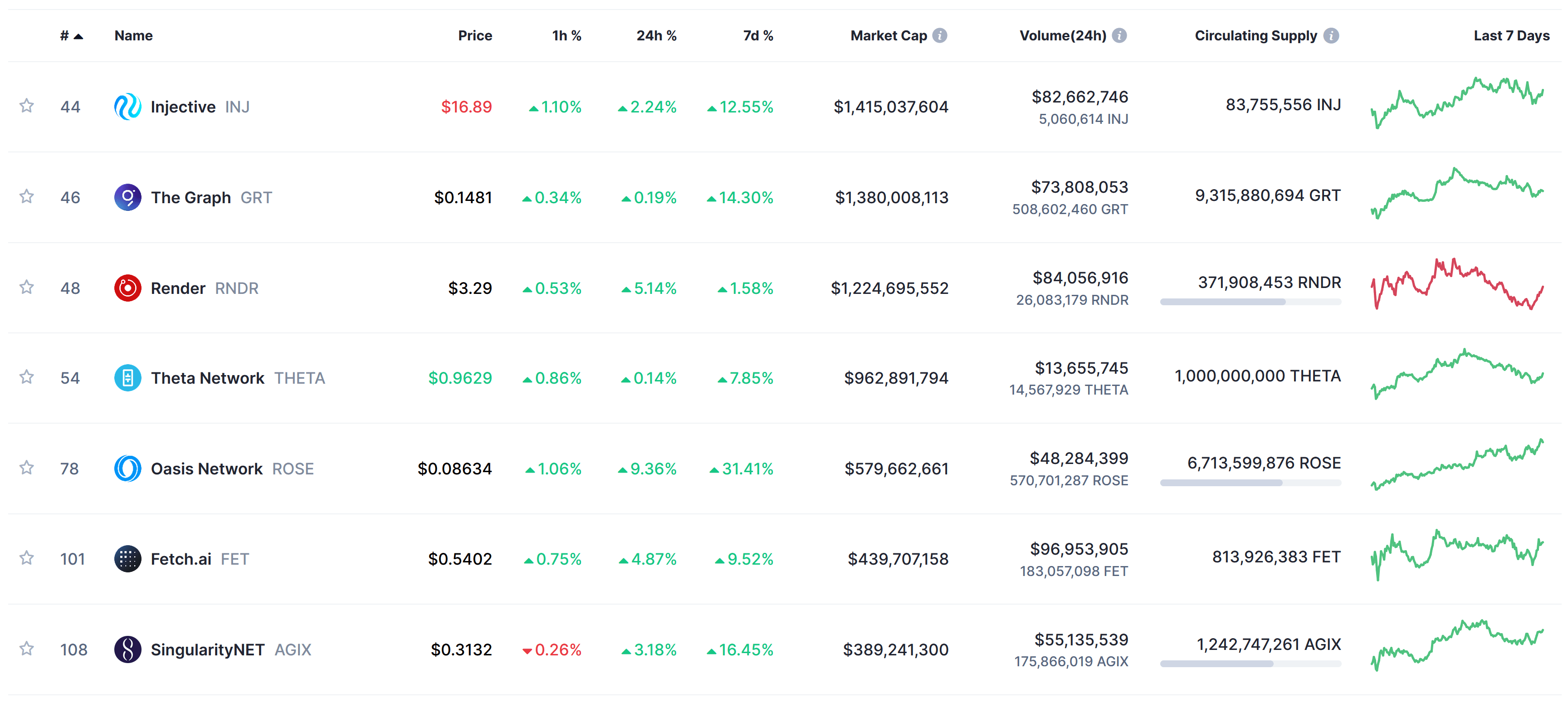 Best AI altcoins by market cap | Source: CoinMarketCap
Best AI altcoins by market cap | Source: CoinMarketCap
Injective INJ: The AI Trend Leader By Market Cap
Injective is a blockchain designed to build robust and interoperable decentralized finance (DeFi) applications. It focuses on replicating certain traditional financial services through smart contracts, including decentralized exchanges (DEXes), lending/borrowing protocols, and derivatives markets.
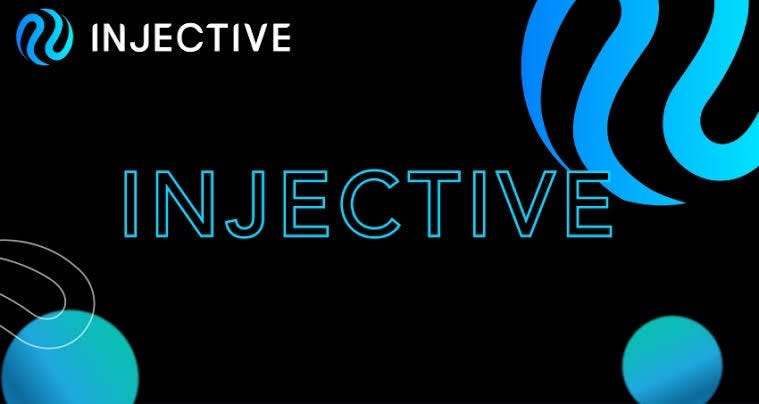 Injective (INJ) | Source: Medium
Injective (INJ) | Source: Medium
Founded in 2018 by Eric Chen and Albert Chon, Injective has achieved key milestones, including its mainnet release in late 2021 and smart contract capabilities in late 2022. The project has garnered support from major crypto investors like Binance and venture capital groups such as Pantera and Jump Crypto.
Injective’s primary role is to offer software modules for developers to create DeFi solutions. Its ecosystem supports natural interoperability, allowing DeFi protocols to interact and access each other’s liquidity. It also uses frequent batch auctions to address frontrunning issues in DEXes.
Injective’s unique selling point is the seamless integration of artificial intelligence into its operational framework, optimizing trading activities. The AI algorithms employed by Injective Protocol are designed to ensure optimal pricing for derivatives traders, contributing to a highly liquid environment with minimal trading fees. This integration of AI into its framework plays a crucial role in enhancing the overall trading experience and efficiency on the platform.
In addition to the core functionalities and goals of Injective mentioned earlier, this AI integration marks a significant advancement in the realm of DeFi and blockchain technology. Injective’s utilization of AI algorithms for price optimization in derivatives trading positions it as a pioneering platform in the intersection of AI and cryptocurrency.
The Graph (GRT)
The Graph is a significant player in the AI cryptocurrency space, operating as an indexing protocol for querying data for networks like Ethereum, Arbitrum and IPFS. It plays a vital role in powering many applications in DeFi and the broader Web3 ecosystem.
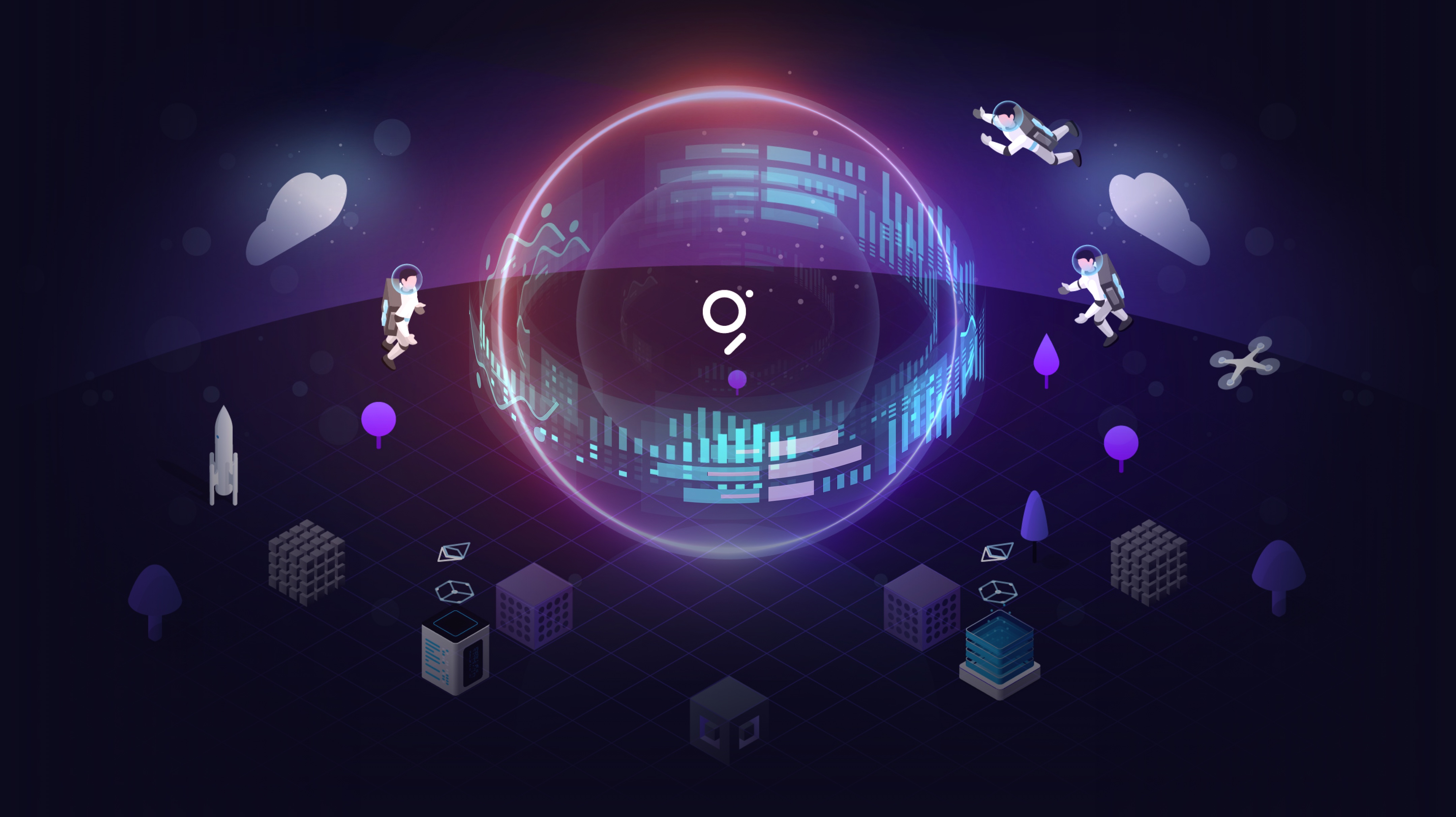 Source: The Graph
Source: The Graph
The Graph allows for the creation and publication of open APIs, known as subgraphs, which can be queried using GraphQL to retrieve blockchain data. This functionality has been widely utilized, with over 3,000 subgraphs deployed by thousands of developers for various decentralized applications (DApps) including Uniswap, Synthetix, Aragon, and others.
The Graph has a strong global community, with over 200 Indexer Nodes and more than 2,000 Curators as part of its Curator Program. It has raised significant funds for network development from strategic VCs and influential individuals in the blockchain community, including Coinbase Ventures and ParaFi Capital.
In terms of tokenomics, The Graph uses the Graph Token (GRT), an ERC-20 token on the Ethereum blockchain. GRT is a work token used by Indexers, Curators, and Delegators to provide indexing and curating services to the network. Participants in the network can earn income proportional to the amount of work they perform and their GRT stake, incentivizing active participation and contribution to the network’s development and maintenance.
Render Network (RNDR): A New Contender In The AI Trend
Render Network (RNDR) is a decentralized rendering platform designed to harness unused GPU cycles for media production. It links content creators with GPU providers, optimizing resource utilization and enabling cost-effective access to GPU power. Render Network’s token, RNDR, incentivizes nodes to contribute their computing power, facilitating efficient virtual content rendering and interaction with immersive 3D environments.
 AI trend: Render Network
AI trend: Render Network
Render Network operates through a process that includes job submission by content creators, a dynamic pricing mechanism, efficient job distribution among GPU providers, and trustless validation to ensure the quality of rendered outputs.
A pivotal aspect of Render Network’s evolution is its partnership with the decentralized cloud service io.net. This collaboration aims to expand AI-focused GPU suppliers and create the world’s largest Decentralized Physical Infrastructure Network (DePIN) for AI. Render Network’s integration with io.net extends its capabilities beyond rendering to machine learning applications, highlighting its commitment to meeting the growing demands of AI and machine learning.
This expansion into AI applications represents a significant step for Render Network, indicating a broader use case for its distributed GPU suppliers. By facilitating the growth of AI and machine learning, Render Network positions itself at the forefront of cryptocurrency AI trends, demonstrating the potential of blockchain technology in supporting advanced computational needs.
Theta Network (THETA)
Theta Network, a blockchain-based network for video streaming, was launched in 2019 to decentralize and optimize the process of video content delivery. Its advisory board includes Steve Chen, co-founder of YouTube, and Justin Kan, co-founder of Twitch. The network’s native token, THETA, is used for governance tasks and is backed by major players like Google and Sony Europe.
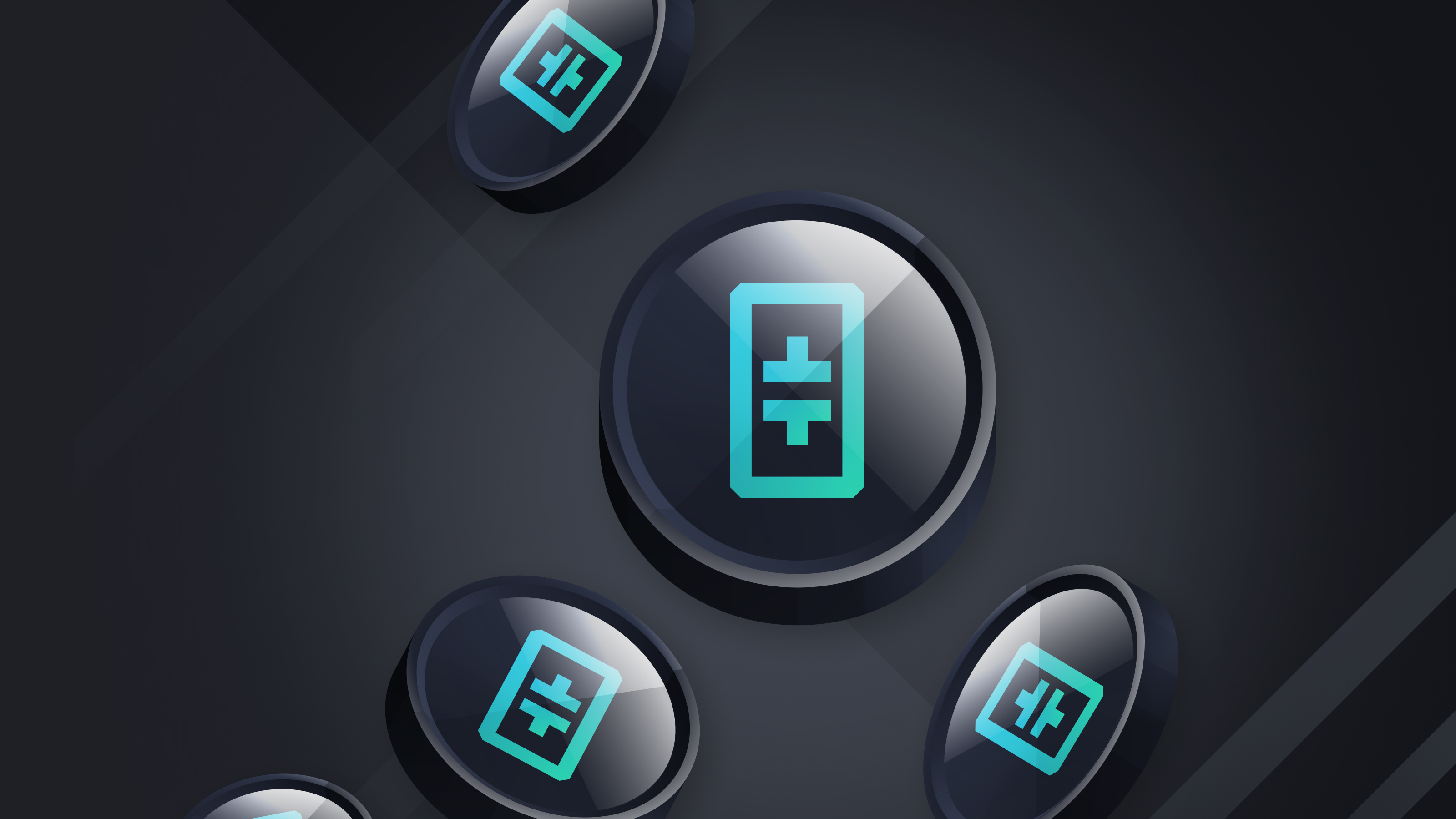 Source: Binance US
Source: Binance US
Theta aims to improve the video streaming industry by addressing issues of centralization, infrastructure, and costs, benefiting end-users and content creators. Founded by Mitch Liu and Jieyi Long, Theta’s team brings a wealth of experience in gaming, video industries, and distributed systems. Their expertise is crucial in Theta’s development, which includes decentralized applications (DApps) on its platform.
What makes Theta unique is its approach to decentralizing video streaming, data delivery, and edge computing, making these processes more efficient and cost-effective. The network features two native tokens: Theta (THETA) for governance and Theta Fuel (TFUEL) for operations. Theta’s model rewards viewers for sharing network resources and offers an open-source platform with governance powers for token holders.
Theta’s application of AI is notably advanced through its partnership with FedML, a collaborative/federated machine learning and edge AI platform. This collaboration focuses on leveraging Theta’s Edge Network, operated by thousands of decentralized nodes, for collaborative machine learning and AI use cases. The partnership emphasizes generative AI and content recommendation, enabling large-scale, privacy-preserving collaborative training of AI models and the deployment of AI models for personalized content recommendations.
Oasis Network (ROSE)
Oasis Network, also known by its token name ROSE, is a privacy-focused blockchain platform. It’s designed to support decentralized applications (dApps) and various blockchain use cases, emphasizing privacy and scalable, secure data handling.
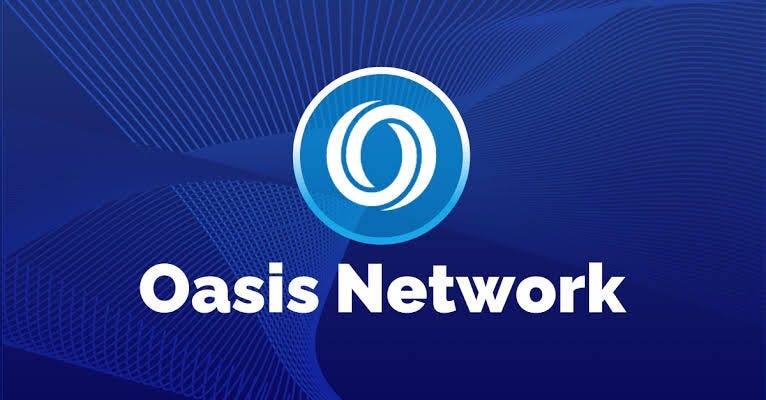 AI trend: Oasis ROSE | Source: Medium
AI trend: Oasis ROSE | Source: Medium
The project is actively leveraging AI technology through various partnerships and initiatives to enhance privacy and data sovereignty within its blockchain ecosystem. Thus, Oasis is partnering with Personal.ai to develop pipelines for AI that protect individual data. The collaboration aims to develop conversational AI models that protect individual data. It achieves this by permitting AI training with an individual’s data only through verifiable, consented access, thus protecting creators and their online communities.
Furthermore, Oasis Network dedicates itself to creating tools with a privacy-first approach for responsible AI development. These tools and their resulting products aim to uphold responsible AI practices, prioritizing individual privacy and data sovereignty. This strategy underscores a commitment to ethical AI development within the Web3 ecosystem.
Remarkably, the project has formed an alliance with the AI unit of Meta Platforms Inc. This partnership is geared towards developing AI capabilities, although specific details of the initiatives or projects under this alliance were not provided in the cited source. Such a collaboration with a major tech company indicates a significant investment in integrating AI technology within the Oasis ecosystem.
FAQ: AI Trends
What Is This New AI Trend?
The latest AI trend is the convergence of AI with blockchain technology, leading to the development of AI cryptocurrencies and decentralized AI applications.
What Are Current Trends In Artificial Intelligence 2024?
Key trends include generative AI, collaborative machine learning, AI in decentralized finance, and advancements in AI-driven cybersecurity.
What Is The New AI Trend?
A significant trend is the use of AI for personalized content recommendation, federated learning, and enhancing video streaming and gaming experiences.
What Are Artificial Intelligence Emerging Technologies?
Emerging AI technologies encompass quantum AI, neuro-symbolic AI, edge AI, and AI-driven decentralized applications.
What Are The Latest AI Design Trends?
AI design trends are focusing on user-centric interfaces, AI in creative industries like fashion and architecture, and the integration of AI in user experience design.
What Are The Current AI Trends?
Current trends include AI in cryptocurrency, decentralized finance, and the increasing use of AI in data analysis and predictive modeling.
What Are The New Artificial Intelligence Trends?
New trends involve AI in blockchain technology, advanced machine learning models in various sectors, and AI applications in edge computing and content delivery networks.
What Are The Latest Developments In Machine Learning?
Developments include advancements in federated learning, AI-powered cybersecurity, and the growth of unsupervised and reinforcement learning.
What Are The Current AI Industry Trends?
The AI industry is seeing trends like AI in financial services, healthcare, and entertainment, with a growing emphasis on ethical AI and AI governance.
How Is AI Trending Across Different Sectors?
AI is trending in sectors like healthcare, finance, education, and entertainment, with applications ranging from diagnostic tools to personalized learning and content recommendations.
What Are The Recent Machine Learning Trends?
Recent trends include the rise of no-code and low-code machine learning platforms, embedded machine learning (TinyML), and the increasing use of machine learning in business operations (MLOps).
What Innovations Are Emerging In Deep Learning Technology?
Innovations include advancements in neural network architectures, deep learning for natural language processing, and the application of deep learning in autonomous systems and robotics.
How Is The AI Trend Evolving In Recent Times?
The AI trend is evolving towards more integrated and decentralized applications, with a focus on enhancing user experiences and expanding the capabilities of AI in various industries.
What Are The Top Five Artificial Intelligence Innovations?
Top AI innovations include AI in blockchain, advancements in generative AI, AI-driven cybersecurity solutions, federated learning, and AI applications in healthcare diagnostics.
How Is Deep Learning Used In Artificial Intelligence Today?
Deep learning powers image and speech recognition, drives predictive analytics, operates in autonomous systems. It also personalizes user experiences on various digital platforms.
What Are The Emerging AI Technologies?
Emerging AI technologies include quantum computing in AI, AI-driven blockchain applications, advanced machine learning models for big data analysis, and AI in edge computing.
What Are Five Artificial Intelligence Breakthroughs To Watch?
Breakthroughs to watch include AI in decentralized finance, advanced natural language processing models, AI in predictive healthcare, AI-driven smart city infrastructure, and innovations in AI for environmental sustainability.
Featured image from iStock
Altcoins
On-chain data confirms whales are preparing for altcoin surge with increased buy orders
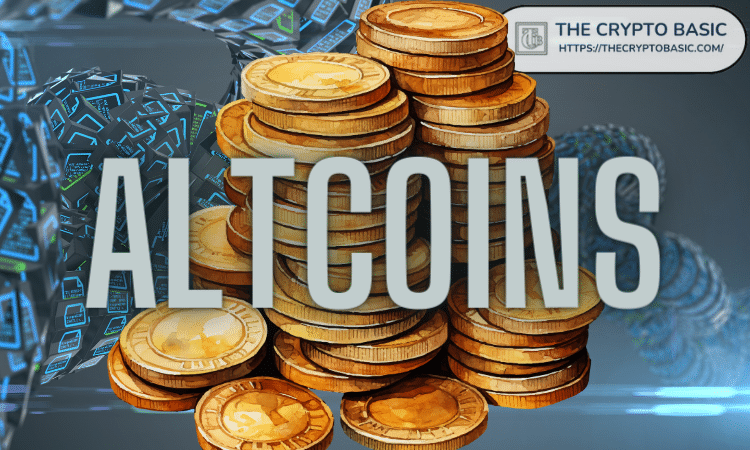
Ki Young Ju, CEO of analytics platform CryptoQuant, believes whales are preparing for an upcoming surge in altcoins.
In a recent revelation about X, Ju underlines that the volume of limit buy orders for altcoins, excluding Bitcoin and Ethereum, is increasing. This pattern suggests the formation of substantial buy walls, highlighting significant buying pressure from large-scale investors.
Ju’s chart identifies two main phases in limit order volume for altcoins: the limit sell phase and the limit buy phase. The limit sell phase saw a notable increase in cumulative sell orders in 2022, demonstrating strong selling pressure from whales and other market participants. This phase coincided with a period of falling altcoin prices due to unfavorable market conditions.

Then, the limit buying phase began, marked by a significant increase in cumulative buy orders. This indicates a period of strategic accumulation where whales establish substantial buy walls.
According to Ju, the increase in buying volume suggests confidence in the future conditions of the altcoin market. This buying pressure creates strong support levels, indicating that whales are preparing for a positive change in the market.
Buying pressure on specific altcoins
Ju also provided a heatmap of the 1-year normalized cumulative buy/sell volume difference for various altcoins, showing the buying and selling pressure over time. Solana (SOL) has seen alternating strong buying and selling phases, with recent activity showing increased buying interest. Cosmos (ATOM) and Polygon (MATIC) have also shown increased buying pressure despite mixed activity trends.
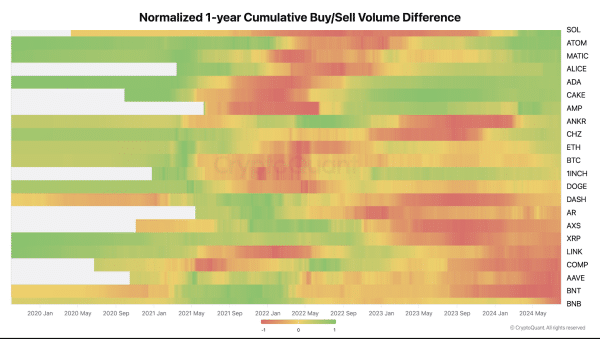

Cardano (ADA) and PancakeSwap (CAKE) have shown balanced buying and selling phases, with recent trends proving increased buying pressure. Coins like AMP and ANKR have also demonstrated increased buying activity. The heatmap reveals that most altcoins are seeing increased buying pressure as whales and large investors accumulate altcoins in anticipation of a rally.
Meanwhile, coins experiencing selling pressure, as indicated by the predominantly red areas on the heatmap, include DOGE, DASH, AXS, XRP, COMP, and AAVE, BNT.
Bitcoin whales are also buying
It is important to note that while whales are accumulating altcoins, Bitcoin whales are also active. Crypto Basic note an increase in buyer activity on Binance, which aligns with an increase in the buy/sell ratio of takers and whale movements. Analyst Ali Martinez highlighted the ratio fluctuations from below 0.8 to above 1.7 between July 27 and 31. Ratios above 1.0 indicate aggressive buying, often preceding price rallies.
From July 27 to July 28, the ratio remained mostly above 1.0, corresponding to the rise in Bitcoin price from around $66,500 to over $67,000. A spike to around 1.5 led to a sharp increase in price to around $68,500. However, on July 30 and 31, the ratio fell below 1.0 several times, corresponding to a drop in price to around $66,000, before a final spike to 1.7 indicated another slight increase in price.
Disclaimer: This content is informational and should not be considered financial advice. The opinions expressed in this article may include the personal opinions of the author and do not reflect the opinion of The Crypto Basic. Readers are encouraged to conduct thorough research before making any investment decisions. The Crypto Basic is not responsible for any financial losses.
-Advertisement-
Altcoins
How to buy a car with cryptocurrency

The automotive and cryptocurrency industries have been merging for the past few years. As digital currencies become more prevalent in everyday activities, it is increasingly likely that they will be integrated into everyday transactions, such as when buying a car. The article unpacks the dynamic relationship between cryptocurrency and car buying today, explaining how digital currencies can be used to buy a vehicle today. It includes elements such as some of the benefits and challenges of buying a car using cryptocurrency and what lies ahead in the future.
Understanding Cryptocurrency Payments in the Automotive Industry
Cryptocurrency is not just a digital asset; it represents a revolutionary approach to decentralized financial transactions. The automotive industry, known for its adaptability, has begun to accept cryptocurrencies as a legitimate form of payment in various markets. For example, luxury car dealerships and online platforms offering car auctions in new york increasingly allow buyers to purchase cars using cryptocurrencies.
There are several factors that determine how much cryptocurrency you need to buy a car. Among them, the most influential will be the current value of the cryptocurrency you want to use at that moment. Unlike traditional currencies, cryptocurrencies can be very volatile. Their value can change drastically in an instant, which affects the amount needed at the time of purchase.
Benefits of Buying Cars with Cryptocurrency
Buying cars with cryptocurrencies offers several advantages:
– Reduced transaction fees: Cryptocurrencies can reduce the fees involved in large financial transactions typical of car purchases.
– Enhanced Privacy: Buyers who value their privacy can benefit from anonymity through blockchain-based transactions.
– Speed and convenience: transactions are faster than those carried out by banks, especially when the operation has an international scope.
Challenges and considerations
Although the benefits are compelling, several challenges must be considered:
– Volatility: At one moment, the price of any cryptocurrency can collapse, or the next minute it can skyrocket, and the price needed to buy a car can double or triple from one day to the next.
– Limited acceptance: Not all dealers accept cryptocurrency, which in turn may limit its use for making purchases.
– Tax implications: This may create different tax implications on purchases via cryptocurrency, depending on your jurisdiction.
Practical steps to buy a car with cryptocurrency
If you want to use cryptocurrency to buy a car, follow these steps:
- Ensure Acceptance: Check if the dealer or auction accepts the use of cryptocurrency.
- Check the conversion rate: You need to know how much your cryptocurrency is currently trading at compared to the price of the car in fiat currency.
- Secure your funds Make sure your digital wallet is secure and funded.
- Know the terms: Be informed and be clear about return policies as well as any additional fees incurred.
- Complete the transaction: Continue the payment via the digital wallet.
Future prospects
There is a good chance that many car dealerships will start accepting digital currencies, especially when blockchain technology pushes the boundaries and cryptocurrencies become stable. This trend is expected to be propelled forward due to the increasing demand for transparency, security, and efficiency in transactions.
Conclusion
The potential for cryptocurrencies to have a real impact on the car buying process is enormous. Of course, there are a few issues that emerge when considering the current market, including volatility and limited acceptance. However, the benefits of using digital currency to execute such transactions can easily outweigh the drawbacks for many buyers. As both sectors continue to grow, buying cars with cryptocurrencies shows a promising future and therefore creates a more connected and developed technological automotive market.
This means that buying a car, whether in cryptocurrency or in another form, is not just about following technological trends; it is rather about enjoying greater freedom and efficiency in financial transactions. Indeed, the closer the digital and automotive worlds become, the more buyers should expect simpler, much safer and also very innovative ways of purchasing.
Disclaimer: This press release article is provided by the client. The client is solely responsible for the content, quality, accuracy, products, advertising or other materials on this page. Readers should conduct their own research before taking any action related to the material available on this page. Crypto Basic is not responsible for the accuracy of the information or for any damage or loss caused or alleged to be caused by the use of or reliance on any content, goods or services mentioned in this press release article.
Please note that The Crypto Basic does not endorse or support any content or products on this page. We strongly advise readers to conduct their own research before acting on the information presented here and to take full responsibility for their decisions. This article should not be considered investment advice.
Disclaimer: This content is informational and should not be considered financial advice. The opinions expressed in this article may include the personal opinions of the author and do not reflect the opinion of The Crypto Basic. Readers are encouraged to conduct thorough research before making any investment decisions. The Crypto Basic is not responsible for any financial losses.
-Advertisement-
Altcoins
Introducing Bit-Chess. The World’s First Fully Decentralized Chess Platform
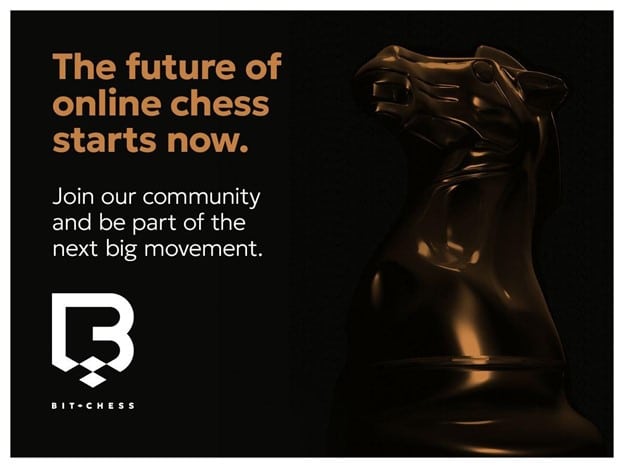
Bit-Chess announces the pre-sale of the world’s first fully decentralized chess platform, combining the classic strategy game with the innovative world of cryptocurrencies. This platform will change the way millions of people interact with chess online, providing a digital space where players can enjoy their favorite game, compete in global tournaments, and earn rewards through play-to-win mechanics.
Bit-Chess is an entry point for both experienced players and newcomers to the crypto space. It provides tools and guides to help even inexperienced users get started with cryptocurrencies by creating in-game wallets upon first login. It is the first chess game to use Web3 technology, and all participants can earn money while playing.
During the presale, 500 of the 2,000 special NFTs will be available, with the rest distributed through tournaments and auctions. Unless NFT holders agree otherwise, the team will manage 1,500 NFTs, preserving their rarity with a cap of 2,000 pieces. More information about the NFT marketplace will be released after the token’s official launch.
The platform aims to become the world’s leading online chess center, offering:
Play to win features.
Global tournaments with cash or NFT prizes.
Player versus player challenges
Special NFTs and more
Bit-Chess invites players from all over the world to join its unique ecosystem, where playing chess is more than just entertainment: it’s an opportunity to earn and learn in the world of crypto.
For more information and to participate in the presale, Visit the Bit-Chess website.
Disclaimer: This press release article is provided by the client. The client is solely responsible for the content, quality, accuracy, products, advertising or other materials on this page. Readers should conduct their own research before taking any action related to the material available on this page. The Crypto Basic is not responsible for the accuracy of the information or for any damage or loss caused or alleged to be caused by the use of or reliance on any content, goods or services mentioned in this press release article.
Please note that The Crypto Basic does not endorse or support any content or products on this page. We strongly advise readers to conduct their own research before acting on the information presented here and to take full responsibility for their decisions. This article should not be considered investment advice.
Disclaimer: This content is informational and should not be considered financial advice. The opinions expressed in this article may include the personal opinions of the author and do not reflect the opinion of The Crypto Basic. Readers are encouraged to conduct thorough research before making any investment decisions. The Crypto Basic is not responsible for any financial losses.
-Advertisement-
Altcoins
Here’s the price of XRP if it handles 10% of SWIFT transactions
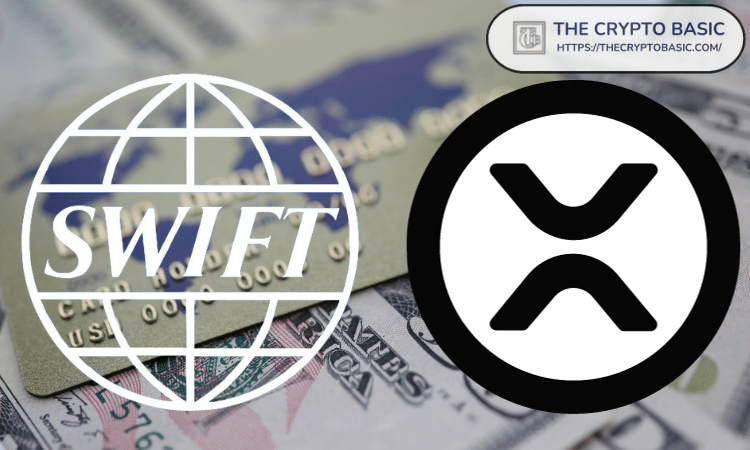
Popular community figure Amélie predicts a massive increase in the price of XRP if its underlying network, XRPL, is used to process 10% of all SWIFT transactions.
In a recent article on X, Amélie took on SWIFT (Society for Worldwide Interbank Financial Telecommunication), suggesting that XRP is a better alternative for cross-border settlements.
Ripple claims Swift is not fast enough
In a recent post on X, the community personality called attention to a Ripple ad claiming that “Swift isn’t fast enough.” The remark was a subtle criticism of Ripple’s transaction processing speeds for the global financial messaging giant.
Interestingly, Ripple has recommended financial institutions to adopt its solution to instantly transfer value across borders.
Amelie compared the processing speed of SWIFT and XRP transactions. According to community figures, cross-border transactions on SWIFT typically take between three and five business days. Conversely, Amelie claimed that XRP transactions can be completed in four seconds.
After the analysis, Amélie echoed Ripple’s sentiments, pointing out that SWIFT is not fast enough compared to XRP.
XRP to Surpass $1,000 if it handles 10% of SWIFT transactions
Therefore, enthusiasts have speculated that all SWIFT transactions will eventually be processed through the XRP Ledger (XRPL), the underlying blockchain of the XRP token.
Interestingly, she suggested that the price of XRP could surpass $1,000 per token if 10% of all SWIFT network transactions were processed through XRPL. However, Amelie did not provide details on how XRP could reach this milestone.
SWIFT VS XRP:
SWIFT: 3 to 5 business days
XRP: Cross-border payments in 4 seconds
SWIFT IS NOT FAST ENOUGH!
I think all Swift transactions will soon be processed via #XRPL 💵💱💴
10% of SWIFT network = $1,000+ per XRP! pic.twitter.com/Jt6mumQHfb
— 𝓐𝓶𝓮𝓵𝓲𝓮 (@_Crypto_Barbie) July 20, 2024
Can XRP replace SWIFT?
Several cryptocurrency enthusiasts have compared XRP to SWIFT in recent years. In particular, the famous crypto asset manager Grayscale characterized XRP as an alternative to SWIFT. Notably, some users have taken this comparison further by projecting that XRP could eventually replace SWIFT because of its inefficiencies, including slow transaction processing.
The potential replacement of XRP with an established system like SWIFT would require more than just community support. Factors such as the final resolution of the SEC lawsuit, increased institutional adoption of XRP, and large-scale commercial partnerships leveraging Ripple’s payment solution could play a critical role in XRP’s potential replacement or integration with SWIFT.
Disclaimer: This content is informational and should not be considered financial advice. The opinions expressed in this article may include the personal opinions of the author and do not reflect the opinion of The Crypto Basic. Readers are encouraged to conduct thorough research before making any investment decisions. The Crypto Basic is not responsible for any financial losses.
-Advertisement-
-
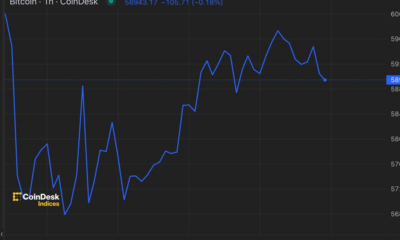
 News1 year ago
News1 year agoBitcoin (BTC) price recovery faces test on non-farm payrolls
-

 Bitcoin12 months ago
Bitcoin12 months ago1 Top Cryptocurrency That Could Surge Over 4,300%, According to This Wall Street Firm
-

 Altcoins12 months ago
Altcoins12 months agoOn-chain data confirms whales are preparing for altcoin surge with increased buy orders
-

 Bitcoin12 months ago
Bitcoin12 months agoThe US government may start accumulating Bitcoin, but how and why?
-

 News1 year ago
News1 year agoNew ByBit Listings for 2024: 10 Potential Listings
-

 News1 year ago
News1 year ago11 Best Crypto TikTok Accounts & Influencers in 2024
-

 Altcoins1 year ago
Altcoins1 year agoMarket giants have taken action!
-

 News1 year ago
News1 year ago11 Best Shitcoins to Buy in 2024: The Full List
-

 Ethereum1 year ago
Ethereum1 year agoTop Meme Coins by Market Capitalization in 2024
-

 News1 year ago
News1 year ago1.08 Trillion SHIBs Dumped on Major Crypto Exchange, What’s Going On?
-

 News1 year ago
News1 year ago19 Best Crypto Games to Play in 2024
-
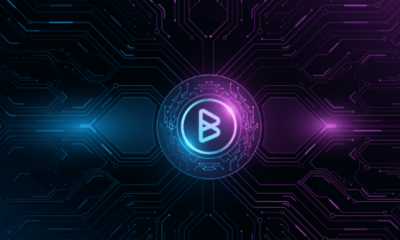
 Altcoins1 year ago
Altcoins1 year agoAltcoin Recommended by Crypto Expert for Today’s Portfolio

